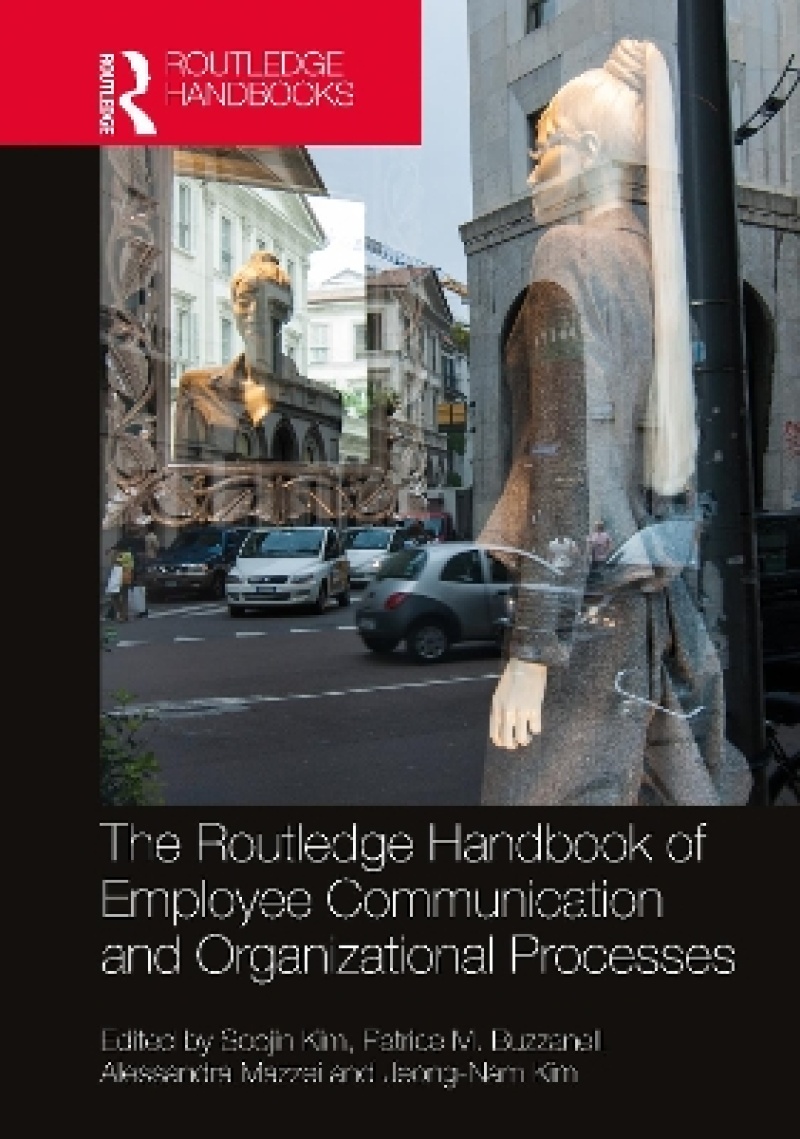This Routledge Handbook takes a truly global and multidisciplinary approach to exploring all facets of employee communication.
Beginning with two key disciplinary approaches—organizational communication and public relations—scholars capture and define employee communication from both perspectives, addressing commonalities and bridging disciplinary differences. This volume places importance on the everyday communicative behaviors by internal members such as leaders, managers, inter/generational cohorts, employees, and those working on behalf of organizations, such as social media influencers, and on expansive conceptualizations of employee communication such as chatbots, environment, and global supply chain members involved in organizing. With a focus on employees in situ, the authors respond to these key questions: in what ways is employee communication relevant today? What does employee communication entail? How, why, and to what extent does employee communication influence or become influenced by organizational processes?
Investigating antecedents, organizational contexts and processes, and consequences of employee communication, and offering key theoretical information and empirically driven recommendations for practice, this handbook will be an essential resource for students, researchers, and industry practitioners in employee communication, organizational communication, business and management, leadership communication, and public relations more generally.
This Routledge Handbook takes a truly global and multidisciplinary approach to exploring all facets of employee communication. It will be essential for students, researchers, and industry practitioners in employee communication, organizational communication, business and management, leadership communication, and public relations.
Foreword
1. Introduction to the Routledge Handbook of Employee Communication and Organizational Processes
Part I. Theoretical Frameworks
2. Public Relations Research on Employee Communication
3. Organizational Communication Research on Employee Communication
Part II. Employee Communication as Complex Phenomena
4. Boundary-Spanning Behavior and its Implications for Employee Communication
5. Employee Social Media Literacy to Promote Employee Communication Behaviors for Sensemaking and Sensegiving Countering Crisis Misinformation
6. Employee Voice
7. Creativity and Creative Processes in Organizations: A Network Perspective
8. Scouting and Vocalizing in Workplace: A Theoretical Approach to Address Quiet Quitting while Promoting Scouting Behavior
9. Employee Silence
10. Understanding Employee Dissent in Relations to Organizational Processes
11. Bedroom and Boardroom: Workplace Romance and Organizational Gossip
12. Organizational Secrecy
13. Employee Communication and Secrecy Breaches
14. Employee Whistleblowing
Part III. Employee Communication and Organizational Process
15. Causes, Contexts, and Consequences of Employee Communication
16. Enacting Ethics beyond Institutionalization: Creating Ethical Culture, Leadership and Employee Communication
17. Corporate Heritage for Employee Communication: Investing in History to Share the Future
18. Employee Communication and Organizing in Not-for-Profits
19. Employee Communication: Resources, Behavior, Enablement
20. Coworkership and Engagement: Towards a Communication-Centered Pespective
21. Leadership Communication: A Multidisciplinary Review of Theoretical Approaches, Applications, and Emerging Opportunities
22. Employee Communication and Organizational Environment
23. Employee Appreciation – A Communication Perspective
24. Care, Justice, and Resilience: Designing Positive Employee Communication from Organizational Communication Perspectives
25. Employee Communication and Well-being
26. Organizational Listening by Employers and Employees: The Communication ‘Glue’ for Organizational Success
27. Employees’ Lived Experiences and Co-creational Employee Engagement Approach
Part IV. Emerging Trends in Research on Employee Communication
28. Connection, or Communicating the Place and Purpose of Work on Social Media
29. Navigating Employee Communication During Times of Backlash: An Affordance Perspective on Online Organizing
30. Tracing the History of Organizational Representatives’ Communication Competence
31. Challenges for Global and International Employee Communication
32. Hybrid Work Context and Leadership Communication
33. Employee Activism for Social Impacts: The Strategic Management and Relational Approach
34. From Employee Engagement to Worker Voice: Communicative Dilemmas in Labor and Supply Chains in the Global South
35. Belonging at Work
36. A Multinational Company with Foreign Employees
37. Internal Corporate Social Responsibility: A Communication Perspective on CSR for Employees
38. The Role of Internal Communication in Predicting Remote Employee Engagement in a Crisis: An Expanded Framework of Remote Internal Crisis Communication (RICC)
39. When Employee Communication Behavior Triggers Organizational Crisis: Strategic Thinking about Internal Crisis Communication (ICC) in Public Relations
40. Pandemic and Employee Communication: Unprecedented Changes in Employee Communication and Organizational Processes
41. Ai, Chatbots, and Employee Communication
42. Conclusion
Index
Produktdetaljer
Biografisk notat
Soojin Kim is an Associate Professor and Program Director in the School of the Arts and Media, University of New South Wales (UNSW), Australia. Her research seeks to find connections between public/stakeholder insights and organizations’ optional strategies for facilitating meaningful engagement and collaboration. She has published in peer-reviewed journals, including Public Relations Review, Communication Research, Journal of Business Research, International Journal of Communication, and International Journal of Strategic Communication.
Patrice M. Buzzanell is a Distinguished Professor in the Department of Communication at the University of South Florida, USA. Her primary research areas are organizational communication, career, work-life, resilience, feminist/gender organizing, and design. She has been honored with the Purdue Provost Mentorship Award and Distinguished Professorship, as well as ICA’s B. Aubrey Fisher Mentorship Award.
Alessandra Mazzei is a Professor of Management at IULM University, Milan, Italy. She has been awarded with several scientific prizes and published several books and articles in journals such as International Journal of Strategic Communication, Corporate Communications: An International Journal, Business Ethics Quarterly, and Journal of Business Research. Her research interests focus on internal communication and employee engagement, organizational voice and silence, whistleblowing, and internal crisis communication.
Jeong-Nam Kim is a communication theorist. He is known for his theory, Situational Theory of Problem Solving (STOPS), and is the founder and leader of the DaLI (Debiasing and Lay Informatics) laboratory, which aims to tackle some of the most pressing information problems of our time such as pseudo-information, public biases, and failing information markets.
